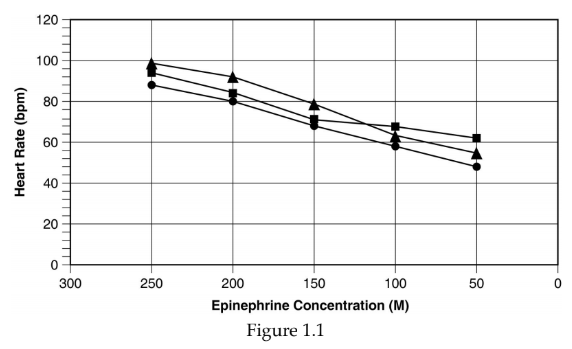High cholesterol levels have been known to be a contributing factor to heart disease and death due to cardiovascular disease for many decades. In the 1970's, scientists used this information to develop a hypothesis that giving a medicine to reduce blood cholesterol levels could reduce the chances of developing cardiovascular disease or dying from cardiovascular disease. They tested a group of
people living in a town called Framingham, Massachusetts. This study became known as the Framingham Study and it is very well known, because it did not support the hypothesis that giving cholesterol lowering medications would reduce the risk of developing or dying from cardiovascular disease. Does this mean that high cholesterol is not a risk factor for heart disease? What does this demonstrate about the scientific process,
Use the table and graph below to answer the following questions.


This demonstrates the difficulty in doing human research because, even though elevated cholesterol levels are a risk factor for cardiovascular disease, reducing cholesterol levels without addressing the reason those levels were high in the first place may not have the expected effect on reducing heart disease. Human testing on hypotheses is important because humans don't always respond to treatments like other animals do, they may actually respond quite differently and each person may respond differently from the rest. It is why we need to test each hypothesis in circumstances as similar to the actual real group that would be treated.
You might also like to view...
Which of the following classes is not one of the five taste sensations?
What will be an ideal response?What will be an ideal response?
The right coronary artery generally gives rise to __________.
a. the circumflex branch b. the marginal branches and the posterior interventricular artery c. the posterior interventricular artery d. the marginal branches
Your predicted vital capacity is 3603 mL. During an anatomy and physiology lab, your actual vital capacity was measured and recorded as 2482 mL. What is the clinical interpretation of this information?
A) Your pulmonary function is above normal, indicative of a consistent exercise program. B) Your pulmonary function is below normal, indicative of pulmonary disease or a history of smoking. C) Your pulmonary function is normal. D) There is not enough information provided to assess pulmonary function.
Brittle bone disorder is another name for
A. scurvy. B. osteomyelitis. C. osteoporosis. D. osteomalacia. E. osteogenesis imperfecta.